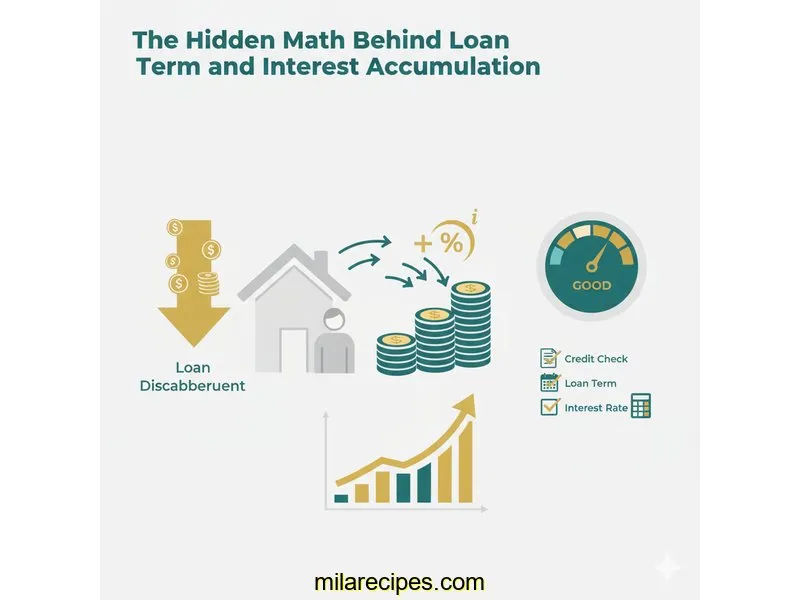
Auto Loan Calculator
Calculate payments over the life of your Loan
Home Blog Privacy Terms About Contact
Calculate payments over the life of your Loan
Home Blog Privacy Terms About ContactPublished on October 26, 2025

It all started on a Saturday afternoon. I wasn't looking to make a big financial move; I was just trying to satisfy my own curiosity. I was looking at hypothetical numbers for a used car and playing with an online loan calculator. I plugged in a loan amount of $18,450 at an interest rate of 7.2%, just to see what would happen. That's when the puzzle appeared.
The calculator presented two options. One had a term of 48 months, and the other was for 72 months. The first thing I noticed was the monthly payment. The 72-month option showed a payment of around $316, while the 48-month option was about $444. My immediate, gut reaction was simple: lower is better, right? Why would anyone choose to pay over $120 more each month?
But something felt off. It seemed too easy. How could stretching things out be so much more appealing without a catch? I knew there had to be more to the story, a piece of the calculation I wasn't seeing or, more accurately, wasn't appreciating. This wasn't about deciding on a car; it was about my need to understand the mechanics behind the numbers. My goal was simple: to figure out why these two scenarios, with the exact same loan amount and interest rate, were telling such different stories.
I realized my financial literacy had a blind spot. I could see the monthly payment, but I couldn’t see the structure holding it up. This is purely my journey of piecing that structure together. Please remember, this is about understanding how calculations work, not financial advice. I'm just sharing what I learned by playing with the numbers myself.

My initial confusion deepened the more I stared at the screen. I was fixated on that monthly payment figure. To my mind, the $316 payment was the clear winner over the $444 payment. It felt more manageable, less intimidating. I started doing some quick, flawed mental math, thinking about the monthly budget. I was missing the forest for the trees.
The online calculator had other fields, of course. One was labeled "Total Interest Paid." I glanced at it but didn't really register its importance. For the 48-month scenario, it showed around $2,839. For the 72-month scenario, it showed over $4,316. In my rush to compare the monthly figures, I dismissed this as just some secondary detail. My mistake was assuming that the most prominent number—the monthly payment—was the most important one.
I kept running the scenarios, tweaking the loan amount by a few hundred dollars here and there. Every single time, the longer-term loan offered a significantly lower monthly payment. And every single time, it resulted in a higher "Total Interest Paid" figure. I felt a sense of frustration. Why was the "cheaper" monthly option secretly the more expensive one overall? It felt like a riddle.
My investigation began with a simple notepad and a pen. I wrote down the two main scenarios:
My real "aha!" moment came when I stopped just looking at the final numbers and started exploring how they were built. I found a calculator that included an amortization schedule—a detailed, month-by-month breakdown of each payment. This tool was the key that unlocked my understanding. It allowed me to see exactly where my money was going with every single payment.
Instead of just seeing a final "total interest" figure, I could now see the interest being calculated and paid month after month. It became clear that the loan term wasn't just a divisor for the total amount; it was a multiplier for the opportunities the lender had to charge interest. With the 72-month loan, there were simply 24 more months during which interest could accumulate on the remaining balance. The lower payment meant the principal was being paid down more slowly, keeping the balance higher for longer and thus generating more interest over time.
To truly solidify this concept for myself, I created a comparison table. It wasn't just about the numbers; it was about contrasting my old, flawed thinking with my new understanding of the mechanics. Seeing it laid out side-by-side made the relationship between time, payments, and interest crystal clear.
The first step in my learning was to shift my focus. I trained myself to look past the monthly payment number and go directly to the total interest field. This single number tells the story of how expensive the loan truly is. Seeing the 72-month loan's interest at $4,316 versus the 48-month loan's at $2,839 was a stark, numerical lesson. That's a difference of $1,477 for the exact same amount of money borrowed.
My second realization was conceptual. Time isn't neutral in loan calculations; it's an active ingredient. Since interest is calculated on the remaining balance, every month that the balance remains high is another month of significant interest charges. The longer term (72 months) keeps the balance higher for a longer period, acting as a powerful multiplier for the total interest accrued over the life of the loan.
Finally, the amortization schedule was my visual proof. On the 72-month schedule, I could see that for the first year or two, a huge chunk of my $316 payment was just feeding the interest. In contrast, the schedule for the 48-month loan showed the principal balance decreasing at a noticeably faster rate from the very beginning. This visual evidence was more powerful than any single number.
To be sure I wasn't fooling myself, I tested this new understanding with a completely different scenario. I plugged in a hypothetical $12,000 loan at 6.5% interest. A 36-month term resulted in $1,257 in total interest. A 60-month term for the same loan resulted in $2,099 in total interest. The principle held true. My understanding of the calculation was solid.
This journey into the weeds of loan calculations taught me more than I expected. It wasn't about finding the "best" loan, but about learning to read the language of the numbers. My perspective on how loan calculators work has fundamentally shifted. Here are the most important things I now understand about the calculations themselves:
As I was going through this process, a few questions kept popping into my head. Here are the questions and the answers I figured out for myself on this educational journey.
This was my core question. The answer is that interest is calculated periodically (usually monthly) on the amount you still owe. A longer loan term means you are paying down the principal more slowly. Therefore, your outstanding balance stays higher for a greater number of months, giving interest more time and a larger base to accumulate on.
An amortization schedule is a powerful educational tool because it makes the abstract concept of interest visible. You can physically see that in the early months of a long-term loan, your payment is mostly interest. As you compare it to a shorter-term schedule for the same loan, you'll see the principal balance shrink much faster, which is why less total interest accrues.
From my learning journey, I concluded there isn't one "most important" number, but a critical pair: the monthly payment and the total interest paid. The monthly payment tells you if the loan fits your cash flow, but the total interest paid tells you the overall expense of borrowing. Understanding both is essential for calculation literacy.
Yes, but only in scale. The principle remains exactly the same. Whether you're calculating a $5,000 loan or a $50,000 loan, extending the term will lower the monthly payment while increasing the total interest paid, assuming the interest rate is constant. The dollar amounts will be bigger, but the mathematical relationship is identical.
That Saturday afternoon of playing with calculators turned into a profound learning experience. My biggest takeaway wasn't about what kind of loan term is "good" or "bad," but about the empowerment that comes from understanding the mechanics behind the numbers. I went from being swayed by the most obvious number (the monthly payment) to understanding the interconnected relationship between all the variables.
The math isn't designed to be tricky; it's just a system with rules. Time is a powerful component in that system. Learning how that component works has given me a sense of confidence I didn't have before. I no longer feel like I'm just taking the calculator's word for it; I understand the "why" behind its results.
I genuinely encourage anyone who feels intimidated by these calculations to open an online calculator and just play. Change one variable at a time—the term, the rate, the amount—and watch how the others respond. That hands-on exploration is, in my experience, the best teacher. You start to see the patterns, and the fog of confusion begins to clear.
This article is about understanding calculations and using tools. For financial decisions, always consult a qualified financial professional.
Disclaimer: This article documents my personal journey learning about loan calculations and how to use financial calculators. This is educational content about understanding math and using tools—not financial advice. Actual loan terms, rates, and costs vary based on individual circumstances, creditworthiness, and lender policies. Calculator results are estimates for educational purposes. Always verify calculations with your lender and consult a qualified financial advisor before making any financial decisions.
